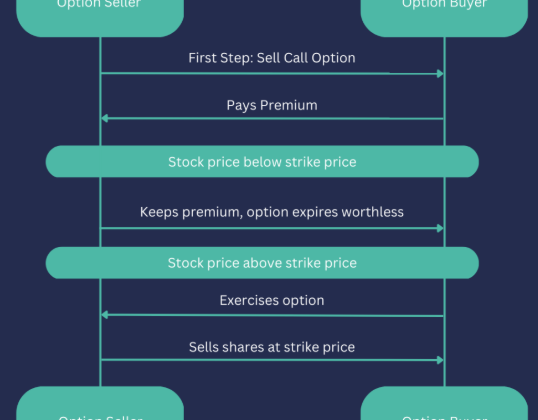
Investing in commercial real estate (CRE) can offer high returns, but the process can be overwhelming for beginners. In this guide, we’ll break down the essentials of commercial real estate investing, including the different property types, key steps to getting started, and the benefits and risks involved. By the end, you’ll have the knowledge you need to confidently begin your CRE investment journey.
What is Commercial Real Estate Investing?
Commercial real estate investing involves purchasing properties with the primary goal of generating profits through rental income, property value appreciation, or both. CRE investments can range from office buildings and retail spaces to multifamily units and industrial properties. Investors in this sector can benefit from the potential for high returns and portfolio diversification, though it requires careful consideration and strategy.
Types of Commercial Real Estate Investments
There are several types of commercial real estate properties, each offering unique opportunities and challenges. Here’s a breakdown of the most common types:
- Office Buildings
Office spaces are leased to businesses for professional functions. These can range from small office units to large corporate headquarters. The demand for office spaces depends on factors like economic growth and remote work trends. - Retail Properties and Shopping Centers
Retail spaces are used by businesses to sell products directly to consumers. Shopping centers often group retailers together, enhancing foot traffic and convenience. This category includes grocery stores, clothing shops, and electronics retailers. - Industrial Properties
These properties are used for manufacturing, warehousing, and distribution. Tenants typically include logistics companies like Amazon and FedEx. The rise of e-commerce has driven increased demand for industrial properties. - Multifamily Properties
Multifamily properties consist of residential units rented out to tenants. These properties are attractive because they provide steady rental income and are popular for investors seeking stable returns. - Special Purpose Properties
These properties serve specific purposes, such as schools, churches, or theaters. They often have unique design requirements and limited alternative uses, making them more niche investments. - Owner-Occupied Commercial Real Estate
Owner-occupied properties are those where a business owner also resides in the space. This offers a combination of business operation and real estate ownership.
Four Steps to Get Started in Commercial Real Estate Investing
Starting in commercial real estate requires preparation and careful planning. Here are four key steps to help you get started:
Step 1: Educate Yourself About the Industry
Begin by learning about the various property types, market trends, and industry terminology. You can achieve this by reading books, attending seminars, and following CRE news. A solid understanding of the market will help you identify promising opportunities.
Step 2: Define Your Investment Goals
Clarify your investment objectives—are you looking for short-term gains through property flipping or long-term returns through rental income? Set specific targets, such as an 8–12% annual return on investment or properties with significant growth potential. Your goals will guide your decisions about property types and geographic locations.
Step 3: Secure Financing
Explore different financing options, such as commercial mortgages, partnerships, or investment groups. Each option comes with its own terms, including interest rates and loan-to-value ratios. Understanding your financing options will help you secure the necessary funds to purchase commercial properties.
Step 4: Identify and Evaluate Properties
Use your network and online resources like Loopnet or CRExi to find potential investment properties. Thoroughly vet each property by reviewing its condition, financials, and the local market’s health. This due diligence process is essential to assess whether a property fits your investment goals.
Benefits of Commercial Real Estate Investing
Commercial real estate can provide several significant benefits for investors, including:
Increase Your Income and Cash Flow
Commercial properties tend to generate higher returns and more substantial cash flow compared to residential properties. With multiple tenants, you can collect rent from several sources within a single building, boosting your overall income.
Lower Competition
Compared to residential properties, the pool of buyers for commercial real estate is generally smaller. This means less competition and the possibility of negotiating better prices for high-quality properties.
Long-Term Leases
Commercial leases are typically longer than residential leases, often lasting three to five years or more. This longer duration provides more stability and less tenant turnover, ensuring a steady income stream.
Build Valuable Business Relationships
Leasing to businesses creates long-term relationships, which can open doors for future investments or partnerships. These connections can provide you with opportunities for portfolio growth.
Limited Operational Hours
Since commercial tenants generally operate within set hours, the property management demands are less frequent compared to residential real estate, resulting in lower maintenance costs.
Risks to Consider in Commercial Real Estate Investing
While there are significant benefits, commercial real estate also comes with its risks. Here are a few factors you should be aware of:
Market Volatility and Economic Fluctuations
CRE is highly sensitive to economic shifts. Recessions, interest rate hikes, or economic downturns can lower property values, increase vacancies, and reduce rental income.
Tenant-Related Risks
Tenant turnover, defaults, and vacancies can disrupt cash flow. It’s important to screen tenants thoroughly and maintain strong relationships to minimize these risks.
Legal and Compliance Issues
Commercial properties must comply with numerous regulations, including zoning laws and building codes. Failure to meet these requirements can result in costly fines or legal disputes.
Environmental and Structural Concerns
Environmental hazards and property defects can cause significant financial strain. Ensure thorough inspections are conducted before purchase to identify potential issues.
Financial Risks
Unexpected expenses, interest rate fluctuations, and negative cash flow can impact the profitability of your investment. It’s crucial to have a solid financial plan in place and maintain adequate reserves.
Key Factors to Evaluate When Considering CRE Opportunities
To make informed investment decisions, you should consider several factors when evaluating commercial properties:
Location
The location of a commercial property plays a significant role in its value, demand, and rental income potential. Properties in prime locations with high foot traffic or proximity to key amenities tend to be more desirable.
Property Valuation
Accurate property valuation is critical. Techniques like the income approach and comparable sales help determine fair market value and ensure you aren’t overpaying for the property.
Financial Metrics
Key metrics like Net Operating Income (NOI), capitalization rate (cap rate), and cash-on-cash return provide insight into the financial performance of a property.
Market Analysis
A thorough market analysis helps assess local economic conditions and supply-demand dynamics. Use resources like CoStar to gather relevant market data and forecast future trends.
Commercial Real Estate Investment Strategies
Investors can choose between direct and indirect investment approaches in CRE:
Indirect Investments
Indirect investments involve purchasing shares in real estate through options like REITs or crowdfunding platforms. These methods offer lower capital requirements, passive income, and liquidity.
Direct Investments
Direct investments involve purchasing a commercial property outright. While this requires substantial capital and active involvement, it provides more control and potentially higher returns.
REITs vs. Private Equity Real Estate
REITs, syndications, and private equity firms provide different ways to invest in commercial real estate. REITs are public and allow for easier diversification, while private equity investments are typically for accredited investors and provide access to high-quality properties with professional management.
Frequently Asked Questions
What is a good ROI for commercial real estate?
A solid ROI for CRE investments is typically in the range of 8-12% annually, depending on the property type and market conditions.
What is the most profitable type of commercial real estate?
Multifamily and industrial properties are often considered the most profitable due to consistent demand and stable income streams.
What is the payback period for commercial real estate?
The average payback period for commercial real estate investments is 5-10 years.
What is passive income in commercial real estate?
Passive income from CRE refers to earnings from rental income and property appreciation, typically from investments like REITs or private equity funds, where investors don’t manage properties themselves.
Start Building Your CRE Portfolio with FNRP
If you’re ready to begin your commercial real estate investment journey, explore opportunities with FNRP. We offer expert guidance and a range of options to help you grow your investment portfolio. Whether you’re just starting or looking to expand, we have the resources you need to succeed in the CRE market.
















